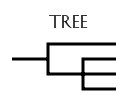| |
The bioluminescent ctenophore Bolinopsis infundibulum
[NOAA Photo]
Chapter Outline
- Description of Eumetazoa
- Classification of Eumetazoa
- Cnidaria
- Ctenophora
- Placozoa

Links to external sites will appear in pop-up windows.
| |
|
Comb Jellies, or "ctenophores are gelatinous marine animals, similar in many ways to jellyfish but lack stinging cnidae, and movement is via the coordinated beating of cilia (“combs”) instead of muscular contractions." - EOL
As of 2024, 27 species of Ctenophora have been observed in iNaturalist in the US and 61 throughout the world.
- CLASS NUDA
- ORDER BEROIDA
- Comb Jelly (Beroe sp.)
- Comb Jelly (Beroe abyssicola) - FLKR
- CLASS TENTACULATA
- ORDER CESTIDA
- Venus Girdle (Cestum veneris) - FLKR FLKR
- ORDER CYDIPPIDA
- Pacific Sea Gooseberry (Pleurobrachia bachei) - most iNat observations in the US for Ctenophora
- Clione limacina - FLKR
- ORDER LOBATA
- Sea Walnut (Mnemiopsis leidyi) - second-most iNat observations in the US for Ctenophora - Chesapeake Bay
- Common Northern Comb Jelly (Bolinopsis infundibulum) - FLKR
- Leucothea - FLKR
- ORDER PLATYCTENIDA
- ORDER THALASSOCALYCIDA
- Unidentified - FLKR
- Unidentified - FLKR
Resources:
- World's Weirdest: Neon Killers - YOUTUBE
|
|
|

